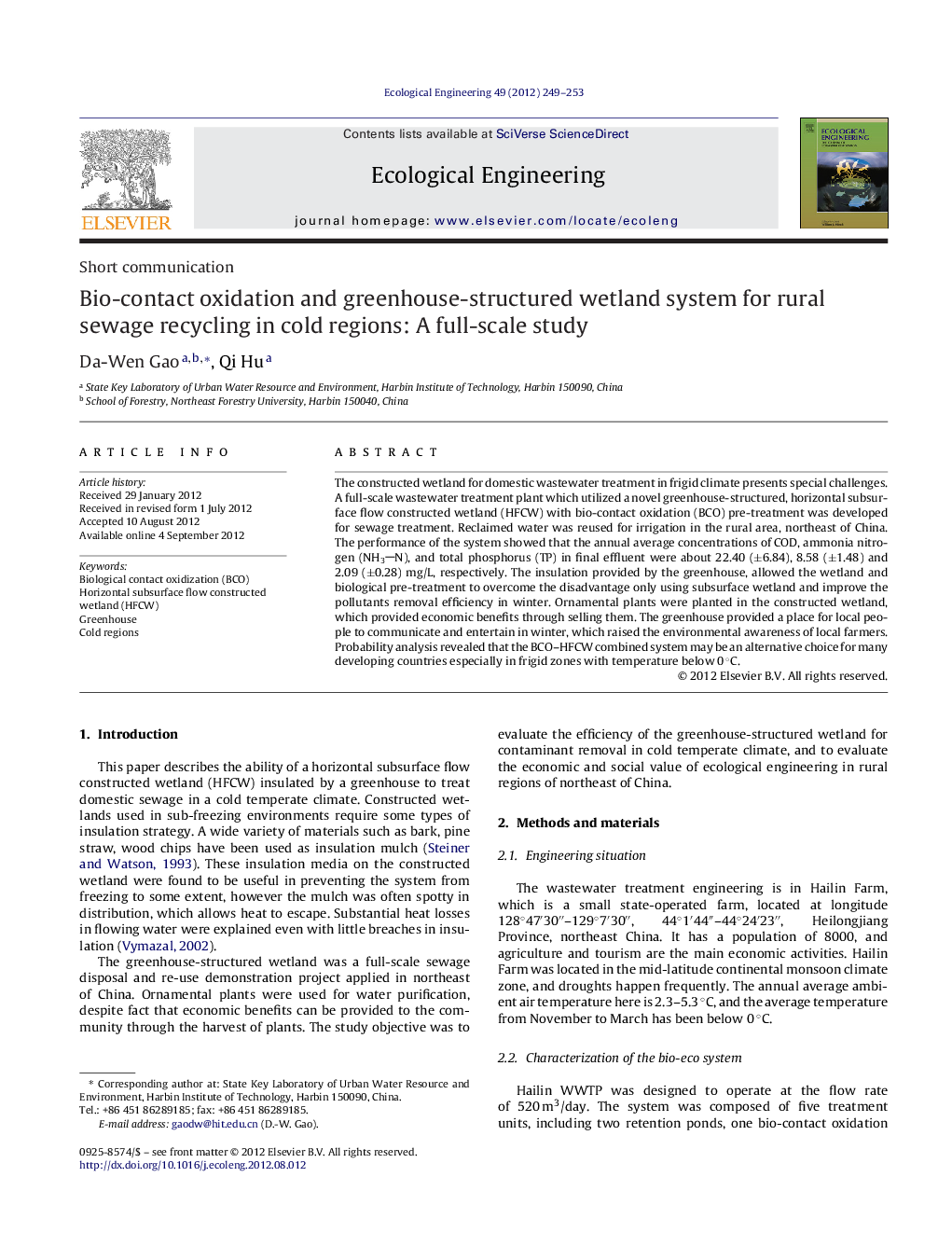| Article ID | Journal | Published Year | Pages | File Type |
|---|---|---|---|---|
| 4389910 | Ecological Engineering | 2012 | 5 Pages |
The constructed wetland for domestic wastewater treatment in frigid climate presents special challenges. A full-scale wastewater treatment plant which utilized a novel greenhouse-structured, horizontal subsurface flow constructed wetland (HFCW) with bio-contact oxidation (BCO) pre-treatment was developed for sewage treatment. Reclaimed water was reused for irrigation in the rural area, northeast of China. The performance of the system showed that the annual average concentrations of COD, ammonia nitrogen (NH3N), and total phosphorus (TP) in final effluent were about 22.40 (±6.84), 8.58 (±1.48) and 2.09 (±0.28) mg/L, respectively. The insulation provided by the greenhouse, allowed the wetland and biological pre-treatment to overcome the disadvantage only using subsurface wetland and improve the pollutants removal efficiency in winter. Ornamental plants were planted in the constructed wetland, which provided economic benefits through selling them. The greenhouse provided a place for local people to communicate and entertain in winter, which raised the environmental awareness of local farmers. Probability analysis revealed that the BCO–HFCW combined system may be an alternative choice for many developing countries especially in frigid zones with temperature below 0 °C.
